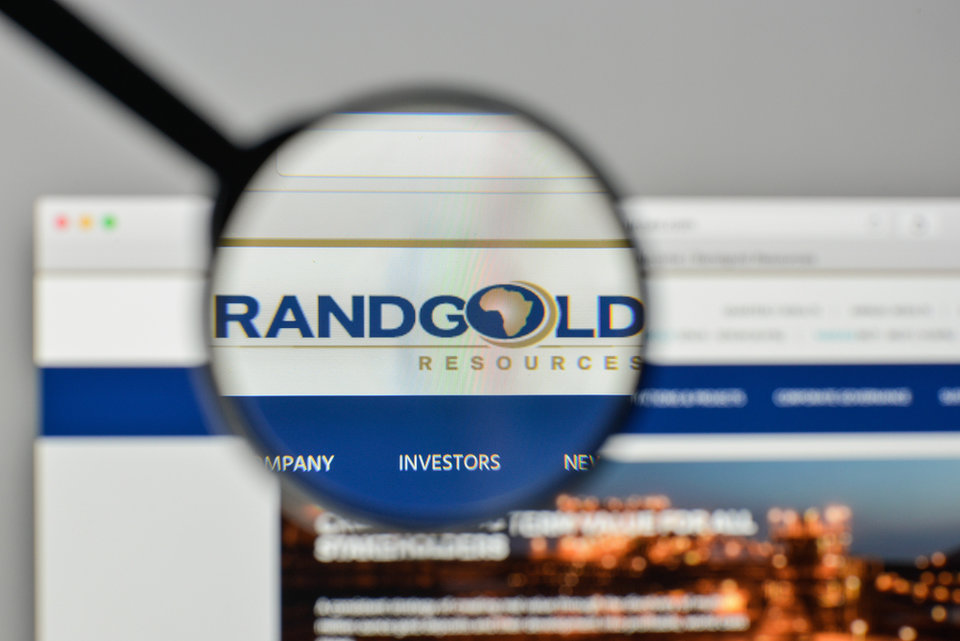Barrick-Randgold: how will gold mining’s biggest merger shape the industry?
The $18bn mega-merger of Barrick Gold and Randgold Resources was one of the mining industry’s biggest moments in 2018. Are M&As a logical choice for companies looking to pool expertise, or do they go deeper, providing crucial technological opportunities? Talal Husseini reports
Scroll down to read the article
When London-listed Randgold Resources announced an $18bn (£14bn) deal to merge its operations with Canada’s Barrick Gold, together they agreed to create the New Barrick Group – the world’s largest gold mining enterprise.
Randgold brought to the table five active gold mines spread across four African nations, from Mali to the Democratic Republic of Congo, as well as an additional gold exploration project in the southeast of Senegal. The company has targeted an aggregate production of 1.3-1.5 million ounces (Moz) this year, with each ounce of gold costing between $590 and $640 to produce. The firm planned a capital expenditure of $225m for 2018 alone.
Meanwhile, Barrick is active in ten countries and is considered the largest gold miner in terms of reserves. The company claims to have 64.4Moz of proven gold reserves, an extra 88.6Moz of measured and indicated gold reserves, as well as 8.1 billion ounces of proven copper reserves.
Combined, the two pretty much have the world’s gold mining production covered. But if the green light is given for them to become one entity, is it likely to affect the sector?
Why are they merging now and will it be approved?
One prevailing argument behind the merger is that mining companies are beginning to see the necessity to pool their resources to stay competitive in an industry that is becoming stagnant, if not showing signs of decline.
“With increasing pressures to create value for all stakeholders, majors are continuously looking for ways to improve productivity,” says Rebecca Campbell, partner at international law firm White & Case.
“The recent Barrick and Randgold merger has highlighted that synergies can drive the consolidation of two majors; where balance sheet improvement and increased scale will create one of the largest gold mining companies in the world.”
Randgold CEO Mark Bristow echoed the need for the merger now more than ever. In a written statement to the press on 24 September, he said: “Our industry has been criticised for its short-term focus, undisciplined growth and poor returns on invested capital.
"The merged company will be very different. Its goal will be to deliver sector leading returns, and in order to achieve this, we will need to take a very critical view of our asset base and how we run our business, and be prepared to make tough decisions.”
Before the companies can officially complete the merger, they have to jump some regulatory hurdles. The first of these hurdles was cleared on 1 November, when the South African Competition Tribunal unconditionally approved the merger, laying the groundwork for a completion date of 1 January 2019. Soon after, the shareholders of both companies voted in support of the merger.
All that remains is the formal sanctioning of the merger by the Royal Court of Jersey (where Randgold is headquartered).
The recent Barrick and Randgold merger has highlighted that synergies can drive the consolidation of two majors

Barrick Gold. Credit: Piotr Swat /Shutterstock.
Monopolies have serious leverage in an industry as they can produce materials at lower costs
Will smaller miners survive M&As?
Legal checks like anti-competition tribunals must be conducted, and for good reason. Mining mega mergers such as Barrick and Randgold, Glencore and Xstrata, or Rio Tinto and Alcan, create concerns in the industry for smaller mining companies who cannot compete financially against the big monopolies.
Monopolies have serious leverage in an industry as they can produce materials at lower costs, employ greater economies of scale, and even restrict supply to push the price of a commodity – such as gold – up.
Take Nicaraguan miner Condor Gold, for example, which is struggling to compete on the London Stock Exchange this year. Its share price has fallen by over 50% throughout 2018, from highs of £59.50 per share on 22 January, to just £23 as of 16 November. Condor Gold chairman and CEO Mark Child told Reuters in October: "London is not a great place to be listed as a junior explorer. There is not a clear understanding of what we do.”
In response, Condor has asked for approval to be placed on the Toronto stock market as a secondary listing, where the company aims for a much higher valuation. While there is an opportunity for smaller miners to capitalise on early rises in share price after a big discovery, it is far more unstable than the major firms. For the majority of new firms in the industry, however, the early years are sink or swim, requiring heavy capital injections and stable revenue streams.
Africa-operating Toro Gold has frozen plans to be listed on the London stock market. Financial advisors are said to be warning smaller companies to avoid listing themselves on equity markets, instead recommending that they consider merger opportunities.
Campbell adds: “For some miners, merging with a technological champion may not only be a way to implement value efficiencies, but the only way to survive in the modern world.”
Randgold Resources.
Credit: Casimiro PT / Shutterstock

Merging mining and technologies will be crucial
If successful, the merger could enable further M&As in the gold mining industry, especially between those firms that have a strong grounding in mining technology.
“Miners that are quick to embrace these technological advancements will be perfect merger candidates for miners that have not yet adapted to the modern world but with ample resources to take the leap,” says Campbell.
Indeed, adopting blockchain, for example, could revolutionise how gold is manufactured and delivered in the industry.
“Blockchain’s role in efficient, sustainable and transparent supply chains could be a game-changer, thanks to its ability to promote trackability, transparency and security through open, peer-to-peer and incorruptible data sharing,” explains Campbell. “Similarly, other technologies advances promoted primarily by the majors, such as the advent of driverless fleets, are cutting labour costs and increasing productivity.”
Despite the current hype circulating blockchain, and how it can improve efficiency in the gold mining industry, there are signs that it may take major industry leaders a while to assess the real advantages of using the technology.
While the potential for traceability means that the blockchain revolution in supply chains is inevitable, with the larger firms like the New Barrick Group first in line to incorporate it, there will still be underlying issues of scarcity and sustainability around the gold industry that the technology will not be able to solve. One of the major challenges for the New Barrick Group will be justifying the massive energy usage that blockchain requires, and associated costs. Other costs include the significant levels of education and training that go into digitising an ancient industry.
It is here that M&As will be particularly useful in generating enough revenue for gold mining companies, who may have to dig deep into their pockets to develop and apply the technology.
Blockchain’s role in efficient, sustainable and transparent supply chains could be a game-changer
Blockchain’s role in efficient, sustainable and transparent supply chains could be a game-changer
With the world’s largest gold mining merger we could see the world’s biggest slowdown in the number of gold deposit discoveries
Will we see new gold exploration?
The world’s biggest gold mining merger could also shake up the industry’s exploration efforts. When a big merger comes to mining, it usually results in the large conglomerate acquiring mines from the smaller company, absorbing all the hard work the junior has done in exploration.
This is because it is often economically better to buy and re-open a dormant mine than build your own, which could lead to a situation whereby fewer and fewer gold mining exploration activities occur.
This is reflected in the statistics, and with the world’s largest gold mining merger we could see the world’s biggest slowdown in the number of gold deposit discoveries. Major finds such as South Africa’s Witwatersrand Basin, or Australia’s Super Pit, might not happen again.
It is also reflected in the size of exploratory budgets for nonferrous metals. Statistics supplied by S&P Global show that exploration budgets were on an upwards trajectory, peaking at around $22.5bn in 2012. Since then, however, they have fallen across the industry to as low as $6.9bn in 2016, the lowest they have been in the last 11 years.
However, this doesn’t have to be the case for the New Barrick Group, which can pool resources and explore new opportunities.
With the world’s largest gold mining merger we could see the world’s biggest slowdown in the number of gold deposit discoveries
A political motivation for the merger
The extensive economic benefits of the merger are well publicised. But hiding below the surface could be one political motivation – to rid the companies of Randgold’s African reputation. This year in particular, investor sentiment towards Randgold has turned negative, with company shares plummeting to a year low of £4,655 per share on 14 September.
Hiding below the surface are political concerns in areas where Randgold operates, particularly in South Africa and the Democratic Republic of Congo. Could it be that by becoming the New Barrick Group, the two companies can benefit from Barrick’s good name, while still absorbing Randgold’s tier one African assets? It will be interesting to see where the New Barrick Group will operate next.